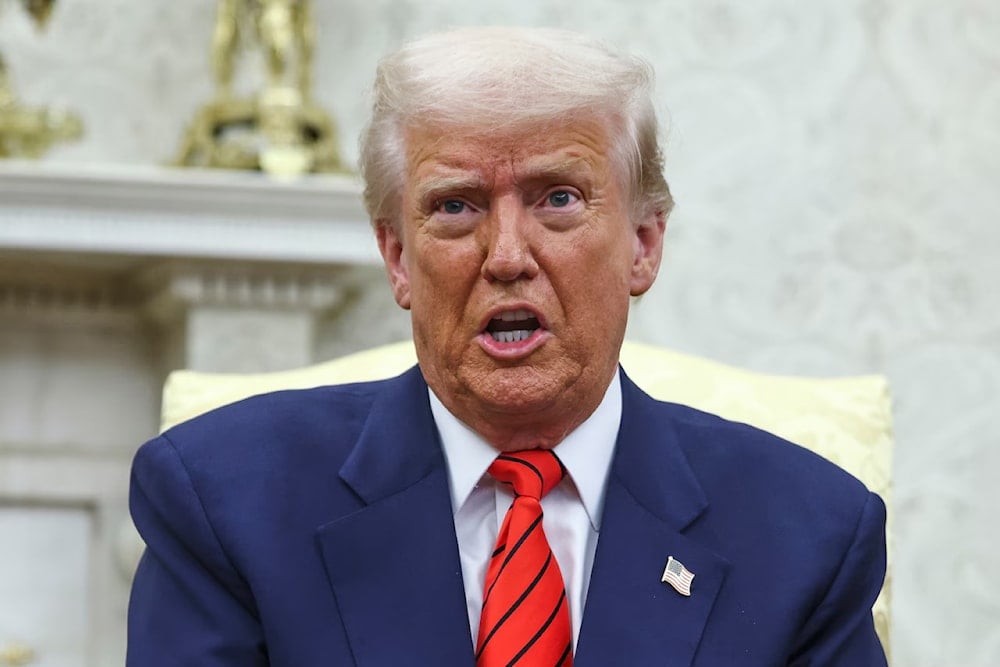Trump slaps 50% tariff on imported copper: White House
Trump's decision is effective August 1, citing national security under a Section 232 investigation.
-

US President Donald Trump talks as he meets NATO Secretary General Mark Rutte in the Oval Office at the White House in Washington, Thursday, March 13, 2025. (AP)
US President Donald Trump signed a proclamation ordering 50% tariffs on certain copper imports, citing national security concerns, the White House announced on Wednesday.
According to a White House fact sheet, the proclamation introduces a 50% tariff on semi-finished copper products and copper-intensive derivative products, effective August 1, while excluding copper scrap and input materials such as copper ores, concentrates, mattes, cathodes, and anodes.
The decision follows a Section 232 investigation that was initiated in February under the directive of United States President Donald Trump.
In addition to imposing tariffs, the order mandates measures to bolster the domestic copper industry, including a requirement that 25% of high-quality scrap produced in the United States must be sold domestically.
White House imposes tariffs on Brazil
On Wednesday, US President Donald Trump signed an executive order that imposes a new 40% tariff on Brazilian goods while characterizing Brazil's trade actions as posing a national security threat to the United States. Added to the original 10%, the tariffs on the South American country hit 50%.
"Today, President Donald J. Trump signed an Executive Order implementing an additional 40% tariff on Brazil, bringing the total tariff amount to 50%, to deal with recent policies, practices, and actions by the Government of Brazil that constitute an unusual and extraordinary threat to the national security, foreign policy, and economy of the United States," the White House said in a fact sheet.
Trump's tariffs, despite his repeated claims that they will restore the United States' economic prosperity, are beginning to take a toll on American consumers as companies shift towards making customers cover the additional costs.
US consumers pay the price for Trump's tariffs
Throughout the spring, retailers and manufacturers warned new import tariffs would squeeze profits, forcing businesses to either absorb costs or raise prices, a reality underscored on Tuesday when major retailer Procter & Gamble announced US price hikes starting next week amid a bleak 2025 outlook.
Procter & Gamble is preparing to raise prices on approximately 25% of its US product lineup in response to tariff-related expenses, with a company spokesperson indicating that these increases will be in the mid-single-digit percentage range across multiple categories.
Despite this year's strong stock market rally led by tech gains, consumer goods makers have faced mounting pressure, with a visible slowdown since the April 2 tariff announcement as investors grow wary of cost inflation and weakening consumer demand.
The food and beverage industry faces persistent challenges with slow post-pandemic sales, as price-sensitive North American consumers increasingly push back against premium-brand markups; a trend Nestlé recently confirmed, noting shoppers' growing reluctance at checkout when facing higher prices.
Additional price increases could intensify investor worries regarding major brands' ability to manage the twin challenges of heightened consumer price sensitivity and rising costs stemming from the continuing trade war under Trump.

 3 Min Read
3 Min Read










